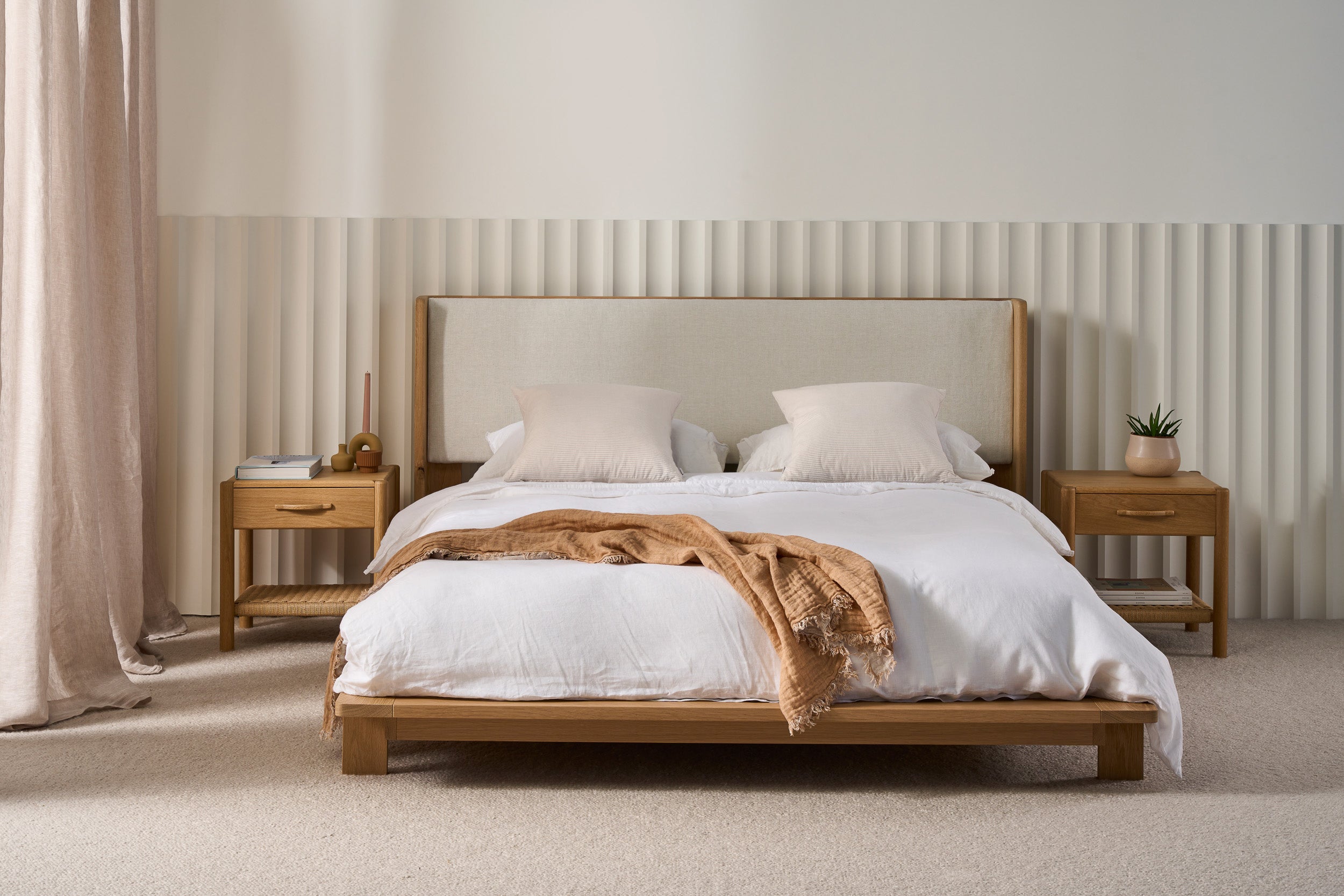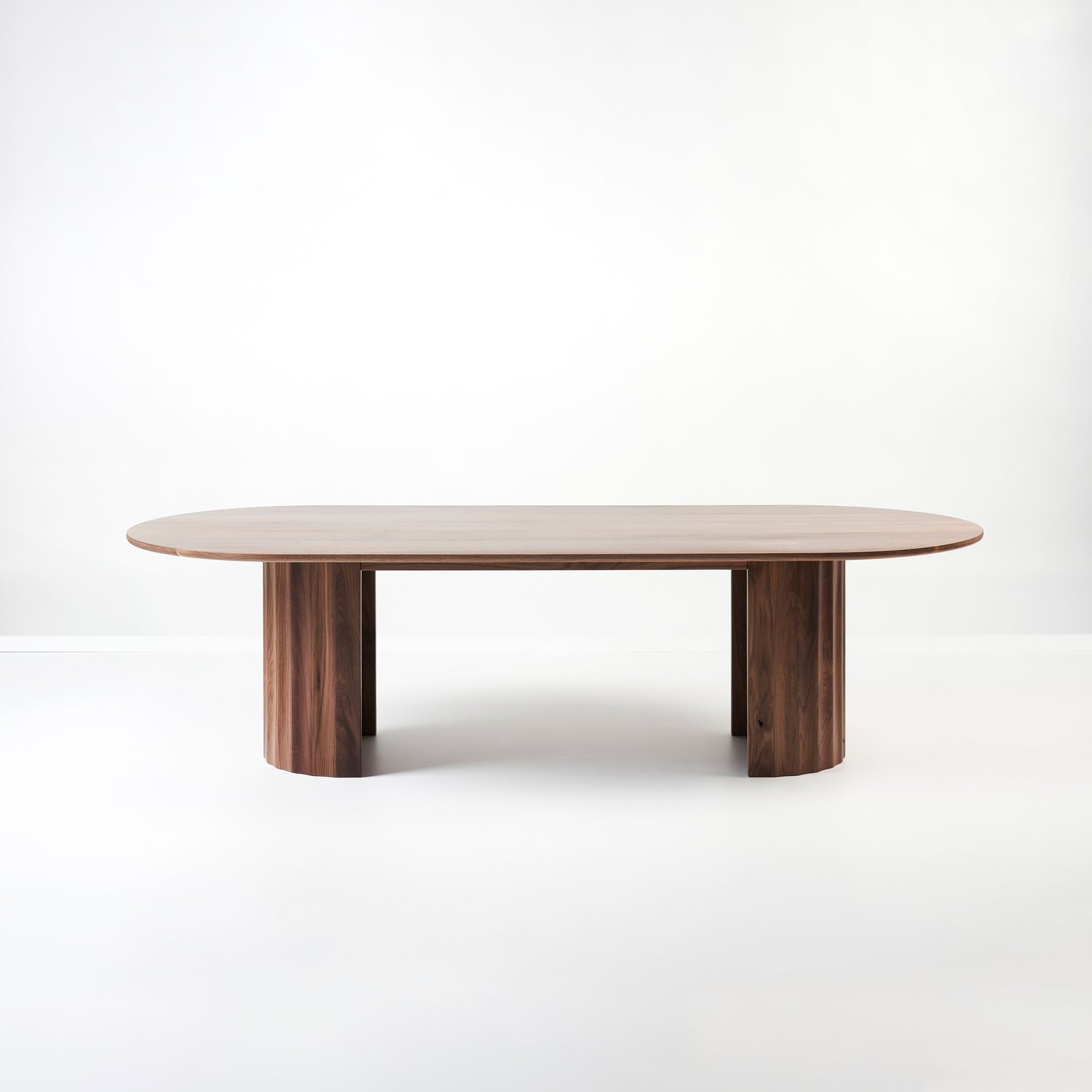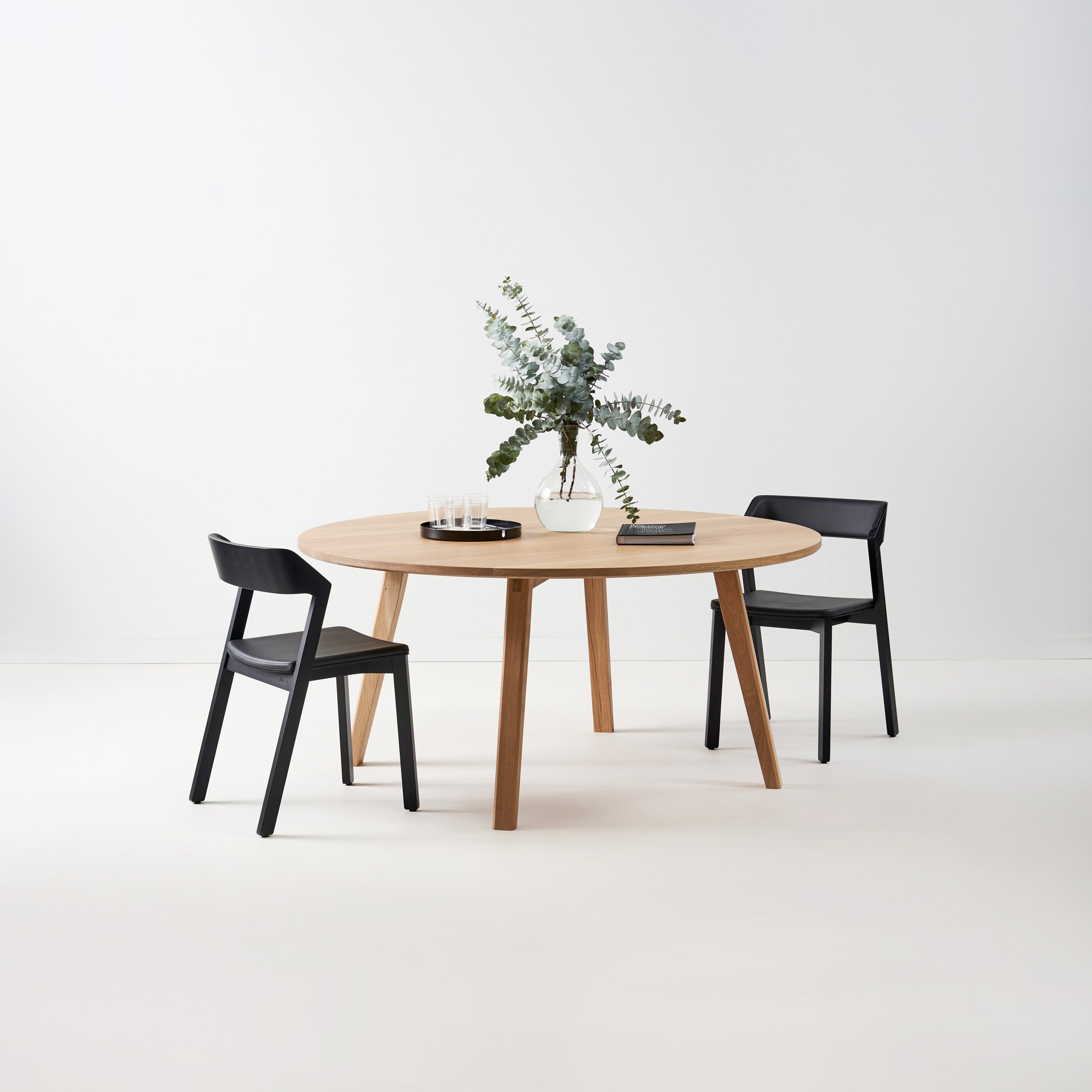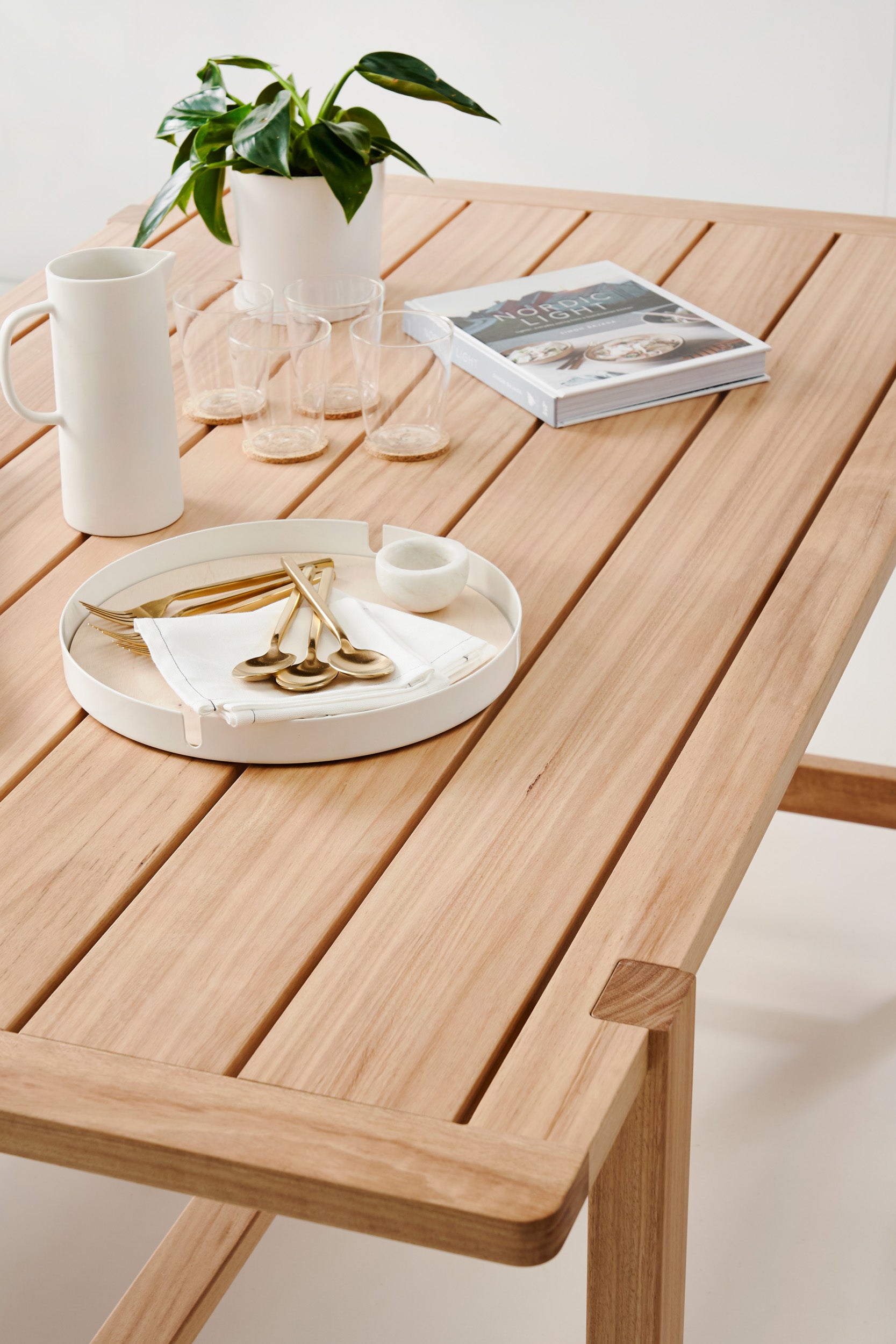When it comes to selecting the heart of your dining room—the perfect dining table—considerations go beyond mere aesthetics. From size and shape to material and functionality, the ideal dining table complements your lifestyle and enhances your space. Here are seven essential tips to guide you in choosing the perfect dining table:
- Assess Your Space:
Begin by measuring your dining area to determine the available space for the table. Consider leaving enough room for chairs and movement around the table. This ensures a harmonious balance between your dining table and the surrounding space.
Here are thing you can do to assess your space:
- Measure Room Dimensions: Measure the length and width of your dining area, taking note of any architectural features, such as windows, doors, or built-in furniture.
- Consider Clearance: Account for at least 36 inches (91 cm) of clearance around the table to allow comfortable movement and pulling out chairs without obstruction.
- Room Shape: Factor in the shape of your room. Rectangular tables align well with long rooms, while square or round tables suit square or smaller spaces. Oval tables provide a balance for more extended spaces.
- Visualize Placement: Use masking tape on the floor to outline where the table will be placed. This provides a visual reference for how much space the table will occupy.
- Determine Your Table Size:
Choose a table size that accommodates both your room dimensions and your typical number of diners. For a rectangular table, allow at least 62cm of space per person for comfortable seating. Circular tables may require less space but be mindful of their diameter.
The dining table is a crucial element in any home, serving as a central gathering place for family meals. Considerations for choosing the right table include assessing the space available, ensuring a comfortable distance between the table's edges and surrounding furniture, and understanding the relationship between table shape and room size.
- Room Space: A minimum of 100cm (preferably 125cm) clearance around the table is recommended for ease of movement.
- Table Shape and Size: Rectangular tables are versatile and can accommodate varying numbers of people. Circular tables save space but may be less efficient for adding extra seating. The width of rectangular tables often increases with length.
- Standard Dining Table Seating Capacity:
- 2 people: 75-80cm width, 105-110cm length
- 4-6 people: 60-75cm width, 120-150cm length
- 6-8 people: 75-90cm width, 150-185cm length
- 8-10 people: 100-110cm width, 210-245cm length
- 10-12 people: 125-150cm width, 245-335cm length
- Circular Table Dimensions:
- 2 people: 75cm diameter
- 4 people: 90cm diameter
- 6 people: 135cm diameter
- 8 people: 150cm diameter
- 10 people: 215cm diameter
- 12 people: 245cm diameter
- Square Table Dimensions:
- 2 people: 75-85cm side length
- 4 people: 90-125cm side length
- 6 people: 130-155cm side length
- 8 people: 180-220cm side length
- 12 people: 240cm+ side length
- Dining Table Height: Our standard height is 75cm, with an acceptable range of 72-76cm. Seat height for dining chairs is typically 47cm, and there should be 24-30cm of space between the tabletop and the seat.
- Decide on the Table Shape:
The shape of your dining table contributes to the overall aesthetics and functionality. Rectangular tables are classic and fit well in long rooms, while round tables promote an intimate dining experience. Consider the shape that aligns with your room's layout and personal preferences.
Let's delve deeper into the characteristics and considerations for round, oval, and square dining tables:
- Round Tables:
- Characteristics: Round tables are known for their soft lines and ability to create a cozy, intimate atmosphere. They work well in smaller spaces as they lack sharp corners, maximizing the use of available room.
- Seating Dynamics: Promotes easy conversation as everyone is within sight. Ideal for smaller gatherings or casual dining experiences.
- Space Efficiency: The absence of corners allows for efficient use of space, making them a great choice for tight dining areas.
- Versatility: Often used in breakfast nooks or compact dining rooms. Can be paired with a central pedestal or legs.
- Oval Tables:
- Characteristics: Combining the softness of round tables with the extended length of rectangular tables, oval tables offer a balanced aesthetic.
- Seating Dynamics: Accommodates a good number of people, similar to rectangular tables, while maintaining the intimacy associated with round tables.
- Space Efficiency: Fits well in various room shapes, providing a visually interesting alternative to traditional forms.
- Versatility: Suitable for both casual and formal dining settings. Often used when a longer table is desired without the formality of a full rectangle.
- Square Tables:
- Characteristics: Square tables exude a sense of symmetry and simplicity. They work well in square rooms, enhancing a sense of cohesion.
- Seating Dynamics: Encourages close-knit gatherings and conversation. Suitable for smaller groups, creating an intimate dining experience.
- Space Efficiency: Ideal for square rooms, utilizing space effectively. Can be placed in corners or centered, depending on the room layout.
- Versatility: Often chosen for modern and minimalist design aesthetics. Offers a contemporary look with clean lines.
- Select the Right Material:
The material of your dining table influences its style, durability, and maintenance. Common options include wood, glass, metal, and composite materials. Wood offers warmth and versatility, while glass provides a modern and airy feel. Consider the material that aligns with your taste and lifestyle.
Here are things to think of when selecting your material:
- Consider Durability: Choose a material that aligns with your lifestyle. Solid wood offers durability and a timeless appeal, while glass provides a modern touch.
- Maintenance: Consider the maintenance requirements of the material. Solid wood may require periodic polishing, while glass is easy to clean.
At mubu we have solid wood options to fit any personality:
White Ash
- White Ash is known for its light color, straight grain, and smooth texture. It exudes a contemporary and modern aesthetic, making it ideal for clean, minimalist designs.
- Generally considered durable, it is more lightweight compared to some hardwoods, making it an excellent choice for furniture that needs to be easily movable.
- White Ash finishes well, allowing for a range of stain options. It can be finished with clear coats to highlight its natural beauty.
American White Oak
- American White Oak is celebrated for its warm, golden tones, prominent grain patterns, and strength. It exudes classic charm, making it a timeless choice for furniture.
- Oak is a hardwood with excellent durability. It resists wear and tear, making it suitable for high-traffic areas. The distinctive grain adds character to the wood.
- It adapts well to various finishes, from natural clear coats that enhance its warm hue to darker stains for a richer appearance.
Maple
- Maple boasts a pale, creamy color with a fine, uniform grain. Its smooth texture and subtle grain patterns create an elegant and sophisticated look.
- Durable hardwood that withstands daily use. Its closed grain allows for a smooth finish, contributing to its refined appearance.
- Maple can be finished in a variety of ways, from clear finishes that preserve its natural light color to darker stains for a more dramatic effect.
Walnut
- Walnut is prized for its rich, dark brown color and distinctive grain patterns. It imparts a sense of opulence and luxury, making it a popular choice for high-end furniture.
- It is a hardwood with excellent durability. Its dark coloration adds to its allure, and the wood tends to darken over time, enhancing its character.
- Walnut is often finished with clear coats to showcase its natural beauty. It pairs well with mid to dark-tone finishes that enhance its dark, luxurious appearance.
- Think About Style and Design:
Your dining table should complement your interior style. Whether you prefer a farmhouse, modern, or traditional aesthetic, choose a table that resonates with your design preferences. Pay attention to details like table legs, finishes, and overall craftsmanship.
- Reflect Interior Style: Ensure the design of the table complements your overall interior style, whether it's farmhouse, modern, or traditional.
- Leg Style: Pay attention to leg styles, such as pedestal, trestle, or four legs, and how they contribute to the overall design aesthetic.
- Consider Functionality:
Think about how you will use your dining table. If you frequently host gatherings, a larger table with extension leaves may be practical. Storage options, such as drawers or shelves, can add functionality. Ensure that the table meets your needs beyond everyday dining.
- Storage Options: If storage is a priority, consider tables with drawers or shelves for keeping dining essentials close at hand.
- Extendable Options: Opt for extendable tables if you anticipate hosting larger gatherings. These tables offer flexibility without compromising daily functionality.
- Set a Budget:
Establish a budget for your dining table purchase. Quality tables come in a range of price points, so having a clear budget will help narrow down your options. Remember that investing in a durable and well-crafted table can be a wise decision for long-term satisfaction.
- Quality Investment: While setting a budget, view your dining table as a long-term investment. Quality tables, especially those made from solid wood, can last for generations.
- Value for Money: Consider the value offered by the table in terms of material, craftsmanship, and durability.
Choosing the perfect dining table involves a thoughtful blend of practicality, aesthetics, and personal preferences. By carefully considering your space, size requirements, style, and functionality, you can select a dining table that not only serves its purpose but also becomes a centerpiece in your home.
Transform your dining space with elegance and durability! Explore our collection of meticulously crafted timber dining tables at Mubu. Elevate your home with timeless pieces designed for both style and functionality. Shop now and create lasting memories around furniture that's made to last. Click here.
Buy once, buy well
x mubu






Leave a comment
This site is protected by hCaptcha and the hCaptcha Privacy Policy and Terms of Service apply.